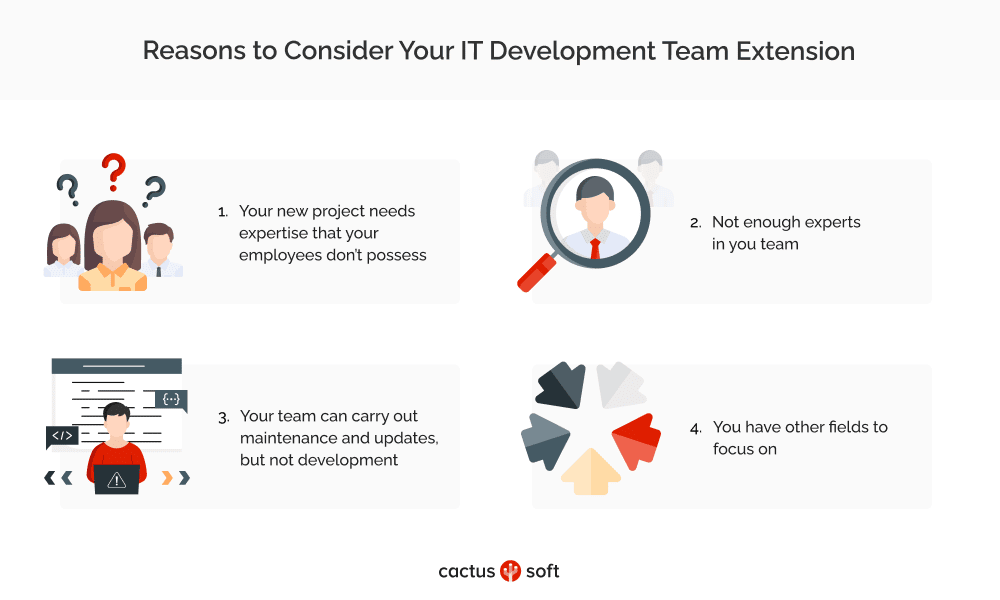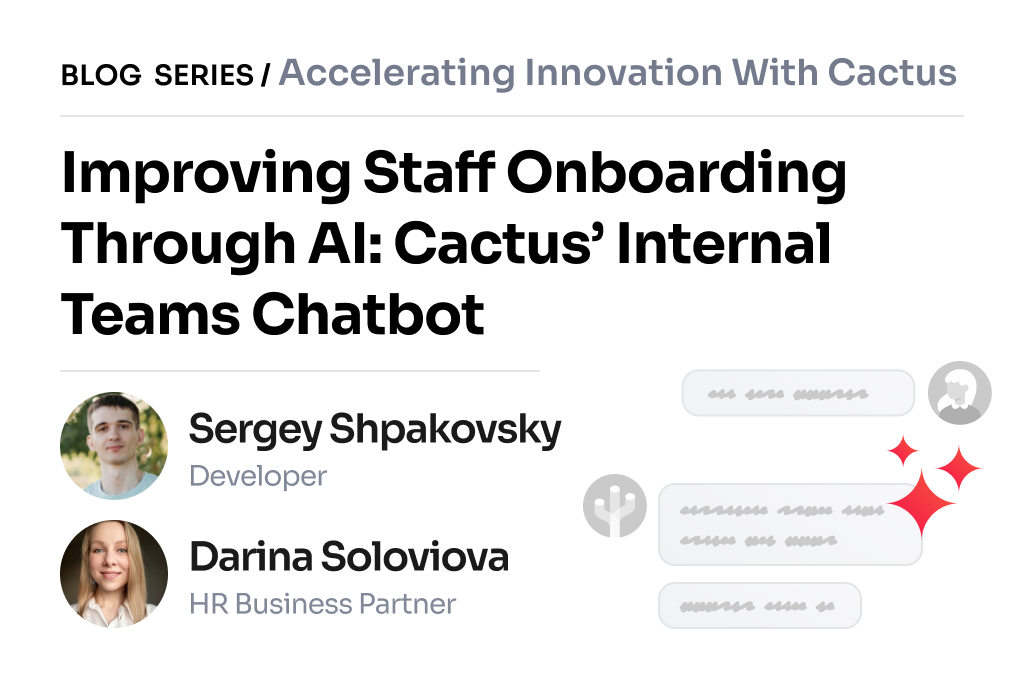A speed-up of digital transformation caused by the pandemic 2020 keeps changing the world. In 2022, improving transparency, flexibility, and resiliency is still the area of focus for multiple organizations around the world.
With an ongoing IT market growth, which is expected to continue through 2024 at a five percent compound annual growth rate (CAGR), the global IT industry spending in 2022 is estimated at approximately 5.3 trillion U.S. dollars. According to Statista, the global developer population is growing at an incredible pace and is expected to reach 28.7 million people by 2024, increasing 3.2 million from the number seen in 2020.
At that rate, it makes sense for any company wishing to boost its business to take full advantage of advanced technologies and expand their IT or development team.
If you are on the verge of reaching a new level of development, there are a few must-have items that you should consider before you make the decision. The process of your team extension may seem time and resource consuming unless you identify the things to consider and outline the action plan for the project you are excited about.

1/ Reasons to Consider Your IT Development Team Extension
Your software development team may be properly built and be able to dive into a project of any complexity. Still, here are some powerful arguments to consider the extension:
- your new project needs expertise that your employees don’t possess
- there aren’t enough experts in you team
- although your IT team is able to carry out maintenance and updates when the project is completed they are not qualified enough for the development of your project
- you have other fields to focus on.

2/ Most Popular Ways To Extend Your Software Development Team
So when you’ve decided to go for the staff augmentation, you’ll have to consider a number of popular ways to do it:
- train and hire your employees
- hire some freelance developers
- hire a number of required specialists from a vendor
- hire a whole software development team from a vendor
- outstaff, which means to obtain ready-made experts remotely for a certain time period
- establish your own R&D office nearshore or offshore
- outsource your project.
3/ Results You Expect From Your Development Team Extension
It is absolutely necessary to define your core goals, a time period for cooperation, whether your project team will need to change with time and how quickly the launch is necessary. Either it is a short-term cooperation or an extension aimed at growing your business, your partnership should be built on mutual trust and respect.
- For a short-term project, it is better to hire a highly-qualified expert from a third-party resource so as not to waste time and money finding a suitable employee.
- For long-term cooperation, finding a highly qualified development partner may be crucial. So, the next thing you have to do is to choose a company, research its professional experience, and collect the feedback from its customers.

4/ Hiring In-House Developers
Following a business-as-usual approach, you may want to improve the sustainability of your in-house tech team. It is an advantageous investment in case your vision of a new project implies enough time and budget. What you can expect:
- ease of management
- instant communication
- great work integration
- effortless introduction of adjustments
- much time spent for search, hiring, and training
- high costs.
5/ Hiring Freelance Software Developers
Reaching out to the services of freelancers may not be a perfect scenario for large-scale companies but the right solution for startups wishing to scale up or down when necessary. What you can expect:
- payment per project
- talents with global expertise
- communication issues
- low motivation
- possible data security breaches.

6/ Onshore IT Provider
To become more efficient in development team extension, you may think about how to outsource IT development successfully.
- Simplicity of communication, including speaking your language
- Easy access and control. For example, your software development team in a non-metropolitan area will lower your operational costs.
- Still an expensive model of cooperation.
- A tough task to find local tech talents with a high level of expertise.
7/ Offshore IT Outsourcing
While considering offshore IT outsourcing, you are most likely to mention significant time and сost savings, and different time zones. Indeed, offshore outsourcing can be efficient as a short-term solution, especially for large-scale companies. What you will get:
- quick results
- sufficient tax and running cost savings
- challenges caused by different time zones
- complicated or limited control over the team and shared resources
- language barriers and cultural issues.

8/ Nearshore Outsourcing
When considering changes in your software development team structure, a perfectly logical next step is to stop at the nearshore outsourcing model. Nearshoring allows for delegating your software development to a trusted partner based in a nearby country. Thus, you gain the advantages of both onshore and offshore outsourcing models:
- a talent pool consisting of a skilled, engaged and committed workforce
- less or no cultural and language barrier
- tax savings
- no major difference between time zones
- ease of matching your IT needs and project requirements
- compliance of operational safety and security level to international standards.
9/ Project Management and Quality Assurance
Whether you choose offshore or onshore, or nearshore outsourcing depending on your priorities, there are some more options to consider. These are project management and quality assurance. To ensure a perfect implementation of the project by your well-structured software development team, you’ll have to decide on the type of software development methodology that suits your needs better:
- Agile development methodology
- DevOps deployment methodology
- Waterfall development method
- Rapid application development method.
Just bear in mind that the Agile quality assurance process permeates the whole software development life cycle starting from the first design meeting and up to the final testing.

10/ Reputation
Looking for a reliable software development partner, you will definitely mention trust as the ultimate factor to influence your decision. To reach out to a credible partner capable of seamlessly extending your team and deliver the project in time and on budget, you may want to do the following:
- examine your future partner’s website thoroughly
- search the web to delve into topics and threats throughout specialized forums to get detailed information
- ask for a recommendation from your peers and associates in personal
- use social networks to be informed by first-hand evidence by your connections
- study a number of platforms that collect information about tech companies from trusted sources, provide reviews and make up rankings based on their survey results.
If you are looking for a trusted nearshoring partner to extend your team, Belgium-based CactusSoft is a perfect choice. The company’s strong reputation results from 350+ successfully completed projects for 170+ satisfied customers.To read what our clients say about working with CactusSoft please visit Clutch, Goodfirms, and TopDevelopers.









